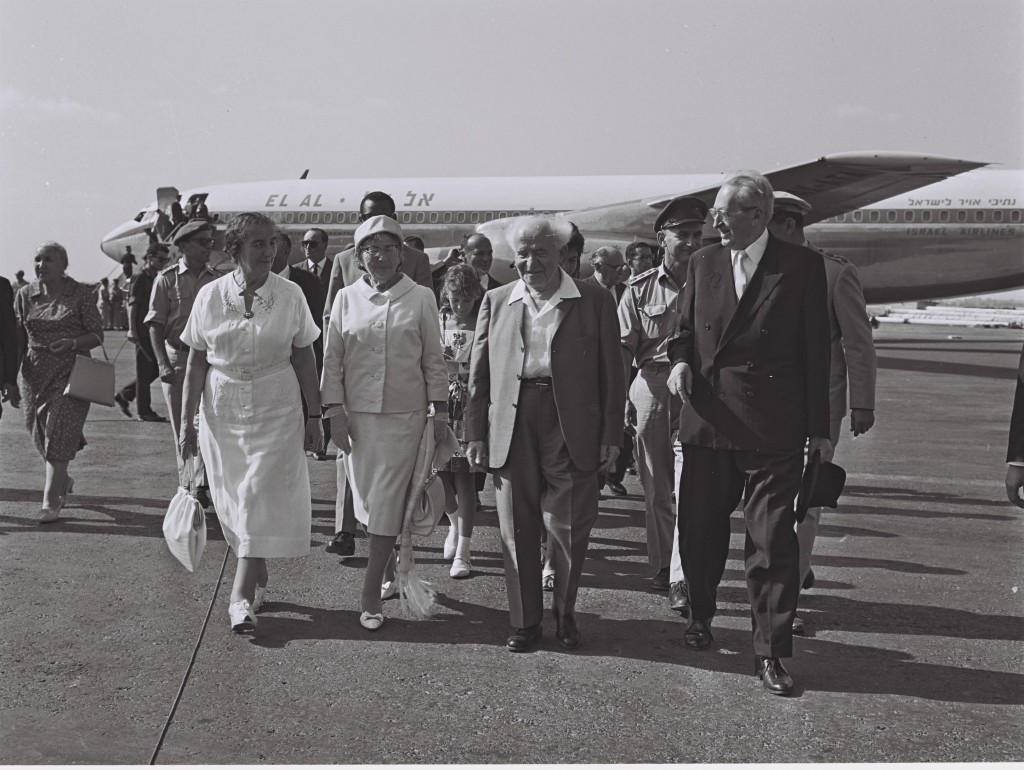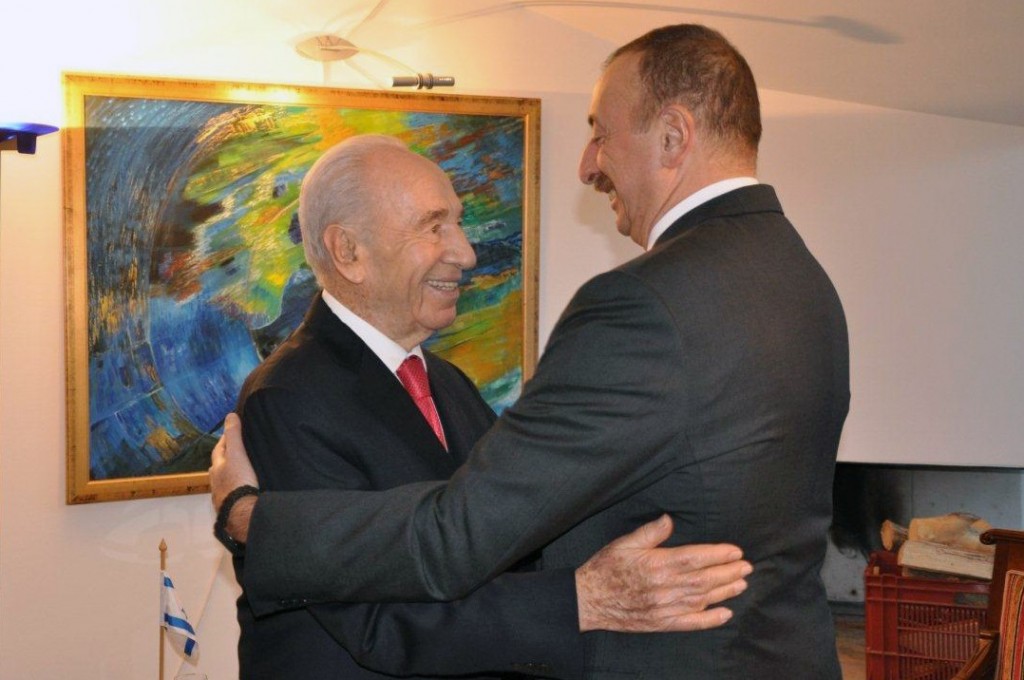If Washington stopped trying to win over the Sunni Arab world, it could create a strong web of alliances with groups that are about to rise in prominence and strength.
In the Middle East, the Arabs are king, sometimes quite literally. The term “Middle East” is a geographic label, broadly describing an area from the Moroccan shores to the Hindu Kush, but it is often referred to—erroneously—as the “Arab World” because of its politically dominant inhabitants. The advent of Islam was an Arab phenomenon and its holiest sites lie in the doyen of Arab puritanism—Saudi Arabia. Arabic is the region’s lingua franca. All but five modern Middle Eastern states have Sunni Arab majorities, Sunni Islam being the dominant religious sect among the Arabs. A Middle Eastern minority is thus, by definition, one that is neither Sunni, nor Arab.
Consequently, ever since it bought out Great Britain as the region’s dominant external power after World War II, America’s principal diplomatic crusade has been to forge a lasting peace between Israel—the most powerful non-Sunni, non-Arab player in the region—and the Sunni Arabs. Much like the American way of war, the American way of peace is to go for the jugular: By solving the Arab-Israeli conflict, Americans believe, the region’s other ills will evaporate. From the 1946 Anglo-American Committee of Inquiry to Secretary Kerry’s recent peace-processing foray, Washington has made the Arab-Israeli peace process the only game in town, embracing the 1993 Oslo Process and subsequent 2002 Arab Peace Initiative as the shortest routes to true coexistence.
Seven decades after its diplomatic entrance, however, American peacemaking has reached a crossroads. Although Arab states no longer wage war against Israel, and many even quietly cooperate with it, the expected outbreak of peace remains just that—expected. Only Egypt and Jordan have concluded peace treaties with Israel and, while American presidents are signatories to both, the agreements were reached mostly in spite of, not because of American mediation. Nevertheless, even after repeated failures, the American approach remains unchanged.
But what if this approach to peace is based on a false impression? A closer look at the region’s demographics reveals that, while Sunni Arabs may indeed be a plurality in the Middle East, they are not a majority.
From Turkish Alevis to Egyptian Copts to Iraqi Kurds, Middle Eastern minorities are, in fact, the Middle East’s majority. Were the United States to see the region through the eyes of its minorities, provide them with greater support, and seek to forge stronger relations between them, it might outflank continued Sunni Arab rejectionism. Desperately seeking to survive in a literally cutthroat region, non-Sunni-Arabs, with some superpower cover, might break the Arab isolation of Israel and forge a more durable pro-American alliance. To paraphrase Winston Churchill, what if there were an indirect approach to peace?
Dating back to Biblical times, the Middle East has always been a mosaic of identities. Hittites, Amorites, and Jebusites, among others, dot the story of Abraham. In Egypt, Joseph used an interpreter when communicating with his unsuspecting brothers, highlighting the linguistic divide between the Egyptians and the Hebrews. The battle between David (the Israelite) and Goliath (the Philistine) is as much a story about clashing civilizations as it is about size. Over time, numerous empires—from Persians to Turks to Mongols to Christians—have risen to dominate the region.
Beginning in the 7th century, Arabs filtered out into the Levant and North Africa, establishing an empire that, a century later, stretched from the gates of France to the doors of India. Reigning for six centuries, Arab imperialism was as much about the identities it sought to supplant as the land it conquered. Egypt, whose population was once majority Coptic, became the heart of the Muslim Arab world. North African Berbers saw their tribal norms and customs slowly morph into Arab and Islamic ones. A century ago, Christians made up a quarter of the Middle East’s population; today, they stand at less than 10 percent and dwindling. Even more telling is the fact that, whereas over one million Jews inhabited Muslim-majority countries in the mid-20th century, fewer than 20,000 reside there today. A region that was once a cacophony of religious and ethnic diversity has slowly become centered on a single identity, that of the Sunni Arabs.

Berbers – also known as Amazigh – take part in a rally in Morocco to try to bring about an “Amazigh Spring,” April 20, 2011. Photo: Magharebia / flickr
But the Sunni Arabs’ geopolitical representation vastly inflates their perceived demographic dominance. Despite accounting for about half the region’s overall population, Sunni Arabs rule 13 of the region’s 19 states; but Iran, Turkey, and Iraq, none of which are Sunni Arab-led, are three of the four largest Middle Eastern states. Kurds, who are predominantly Sunni but non-Arab, are stateless, but their population of 30-40 million is spread across four states. Similarly, very rough estimates suggest there are 25-30 million speakers of Berber languages across the Arab Maghreb. In fact, there are more Jews in Israel than Sunni Arabs in seven other Middle Eastern states, and Israeli women are having more children than those in all but three of those states (Yemen, Iraq, and Jordan). Were Israel to join the Arab League, it would be bigger than half its members.
In its infancy, Israel sought to exploit the region’s crisscrossing identities in order to break its Arab-imposed isolation. Known as David Ben-Gurion’s “Periphery Strategy”—although a more appropriate term might have been “Minority Strategy”—Israel assiduously built relationships with non-Arab countries that shared Israel’s minority status and felt similarly threatened by the newly independent Arab bloc. Over the next quarter-century, Israel developed excellent strategic relations with Iran, Turkey, and much of sub-Saharan Africa. While Ben-Gurion sought to go around the Arab states, the hope was that pressure from the periphery would slowly weaken the Arabs’ refusal to recognize Israel’s permanence in the region.
By the late 1970s, Israel’s situation had changed dramatically. First, Arabs had discovered the political leverage of the “oil weapon,” pressuring sub-Saharan African states into adopting anti-Israel policies. Whereas Israelis were active in sub-Saharan Africa in the 1960s, nearly all states broke off relations by the end of the 1970s. Second, the Islamic Revolution in Iran ended Israel’s strongest regional alliance overnight. Israeli-Iranian cooperation had been quite deep, as Iran sold Israel oil in return for arms, training, and technology. Third, Anwar Sadat’s voyage to Jerusalem and the subsequent Israeli-Egyptian peace treaty finally pierced the Arabs’ iron wall, making the Periphery Strategy somewhat irrelevant.
As the Cold War ended, the Israeli and American approaches converged. Egypt was readmitted into the Arab League, a decade after being expelled for making peace with Israel. In the wake of its victory over Iraq in 1991, the United States dragged the Arabs and the Israelis to the Madrid Conference, which led to public bilateral negotiations between Israel and each of its neighbors. Over the next decade, Israel would sign a peace treaty with Jordan, launch the peace process with the PLO, engage in detailed negotiations with Syria, and establish diplomatic legations in several North African and Persian Gulf countries.

Israeli President Yitzhak Ben-Zvi and his wife are welcomed by Prime Minister David Ben-Gurion and Golda Meir at Lydda Airport on their return from their West African tour, August 17, 1962. Photo: Israel Government Press Office / flickr
Even after the Second Intifada and the end of the Oslo era, the direct approach remained the only one. The 2007 Annapolis conference convened by George W. Bush was Madrid all over again and, in anticipation, the Arab League even sent emissaries to Jerusalem. More recently, Obama and Kerry have tried to pair the Arab Peace Initiative with direct Israeli-Palestinian and even Israeli-Syrian talks. Yet what was once considered a breakthrough can now only be described as a breakdown.
Forty years after the first substantive Arab-Israeli negotiations, peace is not on the horizon, even though war is also unlikely and the geopolitical situation is largely improved. The Arab states have stopped fighting Israel and many tacitly cooperate with it, but Shimon Peres’ “New Middle East” remains but a dream.
But while theories of the region remain two-dimensional—unilateral or bilateral, one state or two states—perhaps there is an opportunity to rethink the entire endeavor. By looking beyond the region’s Sunni Arab core and recognizing the identity-based politics of the Middle East, the United States could help pave a more indirect but better path to peace.
Such a peace, however, will likely not involve doves fluttering, nor balloons floating above the White House lawn. Rather than solve the conflict thru the mutual recognition of narratives, compromises, and concessions, the indirect approach seeks to solve the conflict by winning it or, more accurately, by establishing greater political and military leverage in order to reach an accommodation on favorable terms. Israeli military power succeeded in ending Arab-Israeli wars, and securing Israel, but not in achieving Arab-Israeli peace. By forging alliances with other minority groups—a worthwhile end unto itself—Israel could contain and reduce outsized Arab political power, thus pressuring them into a more agreeable posture.
The political tumult of the last few years has opened the doors for non-Sunni-Arab peoples to seize greater political influence. Most prominent among them are the Kurds. If any people has experienced a true political spring, it is they. Having Saddam’s boot tentatively lifted off their necks in 1991 and then permanently in 2003, the Kurds have built a regime in northern Iraq that is a state in all but name. The outbreak of the uprising in Syria has similarly loosened the regime’s control of the Kurdish areas in the northeast, leading to the creation of an autonomous Kurdish canton. In a move once considered a fantasy, Turkey has now built a strong alliance with the Iraqi Kurds, even cutting a deal that allows for far greater expression of Kurdish identity within Turkey. With Iraq tearing itself to shreds in recent months, the creation of a Kurdish statelet could be in the offing.
Modern Kurdish-Israeli ties go back to the early days of Ben-Gurion’s Periphery Strategy and remained strong until the mid-1970s. The founding father of the modern Kurdish national movement, Mullah Mustafa Barzani, father of the current president of the Kurdistan Regional Government (KRG), even visited Israel twice. Although ties were abruptly broken in 1975 due to an Iranian-Iraqi rapprochement, renewed Kurdish autonomy has reinvigorated relations. Kurdish leader and Iraqi president Jalal Talabani publicly shook hands with then-Israeli defense minister Ehud Barak in 2008. When they receive American delegations in Erbil, Kurdish leaders openly talk about how Israel is the model for their own political future: A flourishing minority in a hostile region with close ties to the resident superpower. On the heels of the first KRG oil exports to Israel, Prime Minister Netanyahu became the first regional leader to publicly support Kurdish statehood.
More publicly, Israel maintains close ties with Azerbaijan, a Shiite country and neighbor of Iran. Israel is among Azerbaijan’s top five trading partners—$3 billion a year—and the Baku regime supplies Israel with nearly 40 percent of its oil. In exchange, Israel is one of its major arms suppliers. Israeli Foreign Minister Avigdor Lieberman just returned from a visit there, his third in four years.
Further afield, the Arab Spring revolts have lead to stronger public affirmation of Berber—or Amazigh—identity across North Africa. In Morocco, Algeria, Libya, and Mali, Berbers are demanding greater cultural and linguistic recognition. In 2011, the new Moroccan constitution officially recognized the Amazigh language and Berbers are now advocating for their new year to be recognized as a state holiday. They are believed to constitute 50 percent of the Moroccan and 25 percent of the Algerian population.

President of Azerbaijan Ilham Aliyev (R) embraces Israeli President Shimon Peres during the annual meeting of the World Economic Forum in Davos, Switzerland, January 22, 2014. Photo: President Spokesperson / Flash90
Berbers are also increasingly outspoken in their opposition to the Arab form of radical Islam professed by groups like Hamas, as well as the Arabs’ anti-Israel hypocrisy. Last month, Moroccan Berbers launched the “Moroccan Observatory for the Fight Against Anti-Semitism,” an organization dedicated to fighting anti-Jewish bigotry and strengthening cultural ties with Israel. The more Berbers perceive Arab Islamism as the greatest threat to their own identity, the greater the opportunity for increasing relations with other minorities under siege, such as the Jews.
Even in Israel, minorities are reaching out to the Jewish state like never before. Israel’s 20 percent Arab minority is hardly homogenous; the majority are Sunni Muslims, but there are also Bahais, Circassians, and numerous Christian denominations. In recent years, Israel, as one headline put it, has experienced a “Christian Awakening,” as Christian Arabs seek to distinguish themselves from their Muslim brethren by seeking closer ties to the Jewish majority. A minority within a minority, Christian Arabs were recognized this year as a distinct minority group for the first time; and the IDF has begun sending them voluntary conscription papers, reversing a decades-old policy against doing so. Although they number only 150,000, Israeli Christian Arabs, much like Israeli Druze, are beginning to recognize that there are immense benefits to cooperating with Israel.
Of course, the largest obstacle to a minority peace is, like everything else in the region, the Iranian regime. By perverting Shiism into a revolutionary, expansionist, and nihilist creed, the regime can only maintain its rule through vehement anti-Americanism and anti-Semitism. Leading the largest Shiite state, it has fashioned alliances with the dominant Shia populations in Iraq, Lebanon, and Syria, forging a powerful anti-Israel bloc. Until the regime is dethroned, its ideology and activities will continue to block any cooperative relationship with the West, even in the face of recent Sunni jihadist advances in Syria and Iraq.
Were the Iranian regime to lose power, however, it could unlock other opportunities for minority cooperation between non-Sunni-Arabs and Israel, hints of which are already apparent. In late May, Lebanese Cardinal Bechara Rai—head of Lebanon’s largest Christian denomination, the Maronite Catholic church—visited Israel as part of the Pope’s pilgrimage, becoming the first Lebanese religious leader to do so since 1948. Cardinal Rai stayed even longer than the Pope, touring Haifa, Jaffa, Nazareth, and the Galilee.
Meanwhile, while cooperation between the Iranian-backed Assad regime and Israel is not plausible so long as the Syrian government is built on an ideology of rejecting the existence of the Jewish state, cooperation between Alawites and Jews could occur at some point in the future. Indeed, the IDF Chief of Staff has publicly offered sanctuary to the Syrian Alawites should the Assad regime fall. Like the Jews, Alawites are a persecuted minority, a heterodox Islamic sect legitimized by the Iranian Mullahs for political purposes. Without Iran, these groups and others may well look to Israel for support against the radicalizing Sunni population of the Levant.
Today’s Middle East is a paradox. On the one hand, radical Islamism seems to be homogenizing a once-eclectic region; oppressing, persecuting, and even ethnically cleansing numerous minority groups. On the other hand, the political power of non-Sunnis is rising and increasingly remolding the region. Even though it kick-started a Sunni insurgency, the American-led invasion of Iraq restored Shiite rule to Baghdad for the first time in nearly 400 years and set in motion what could be a golden age of Kurdish self-determination.
Similarly, the shockwaves of the Arab Spring have aroused more vocal expressions of minority identities and spawned budding relationships between marginalized groups. While some of this is occurring on a small scale, such as Israeli-Arab Christians joining the IDF in greater numbers or once-warring Christian sects banding together out of necessity, grander alliances, such as an Israeli-Kurdish strategic relationship, could fundamentally reshape the region.
For too long, the United States has seen the region through the eyes of its dominant civilization—Sunni Arabs—even as their political power distorted the demographic realities of the Middle East. Imagine an American president who did the opposite: Rather than hold a grand peace conference between Israel and the leaders of Sunni Arab states, he could work to forge closer ties between the region’s minorities, all of whom are fighting for their survival in a cutthroat world. By doing so, the United States could begin to see the region through the eyes of its inhabitants—as a region where Sunni Arab dominance is literally only half the picture.

Egyptian protesters march for greater protections for religious minorities, October 10, 2011. Photo: Omar Robert Hamilton / flickr
The potential fruits of such a strategy, however, would likely be delayed until after the dissolution of the Iranian regime. Ironically, Israel finds itself aligned with the very same conservative Arab states that refuse to recognize it. It may indeed need their cooperation in order to end Iranian perfidy in the short-term even as it seeks to outflank them over the long-term. While this oddity should not stop Jerusalem and Washington from reaching out and supporting other threatened minority groups, it does highlight the complex two-step nature of any new approach as well as the usefulness of regional alliances.
Such an unorthodox approach might further Israel’s integration into the region. A return to Ben-Gurion’s Periphery Strategy, this time with American participation, could help open more productive paths to peace. After 70 years of trying to broker a lasting peace between Israelis and Sunni Arabs, inverting this approach and focusing efforts on a peace based on non-Sunni reconciliation with Israel could finally realize the half-century dream of American and Israeli diplomats. By divesting itself of a misperception and understanding the Middle East through the real identities of those who live there, the United States might finally win the Nobel Peace Prize it deserves.
![]()
Banner Photo: Boris Niehaus / Wikimedia






